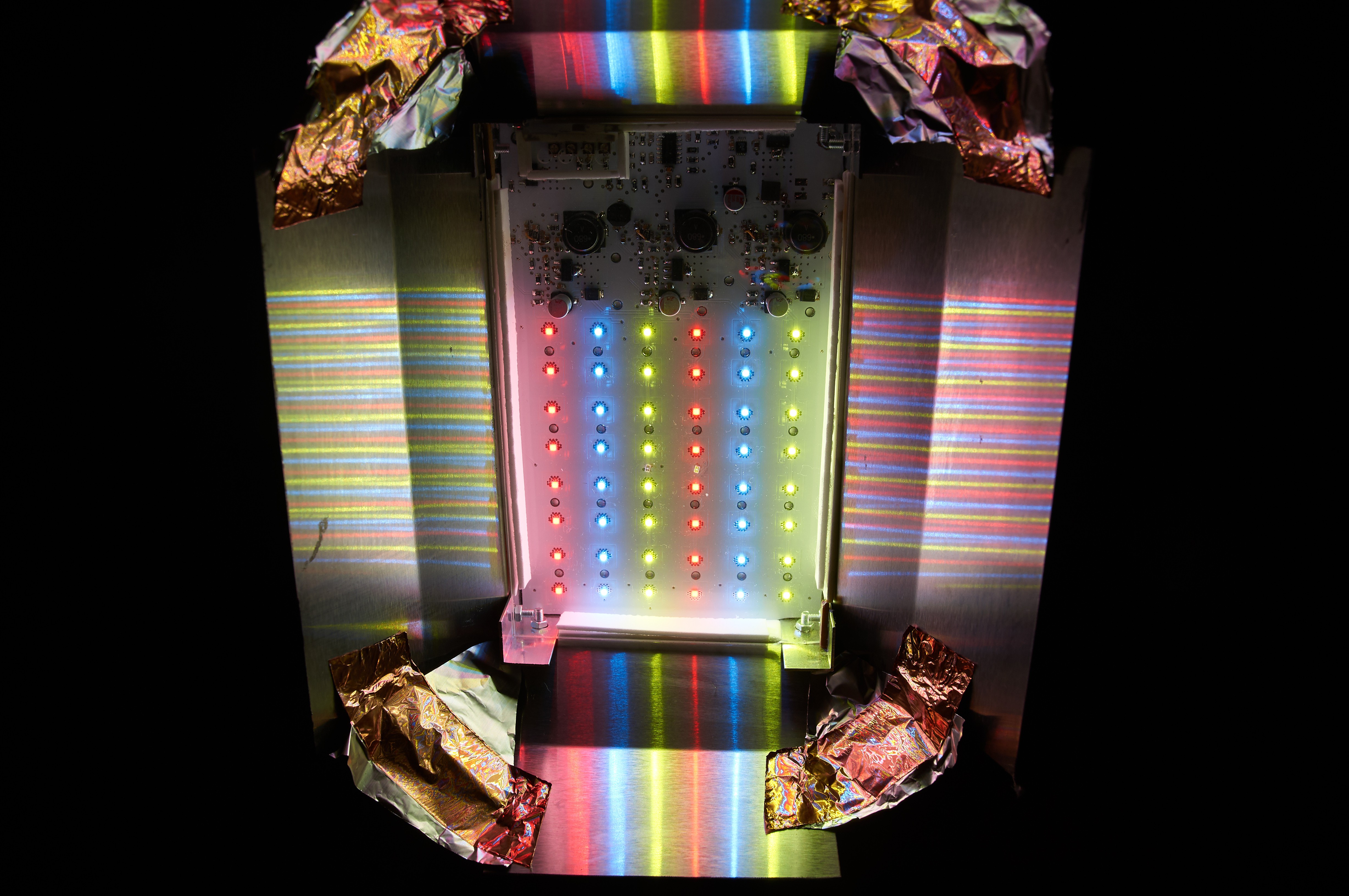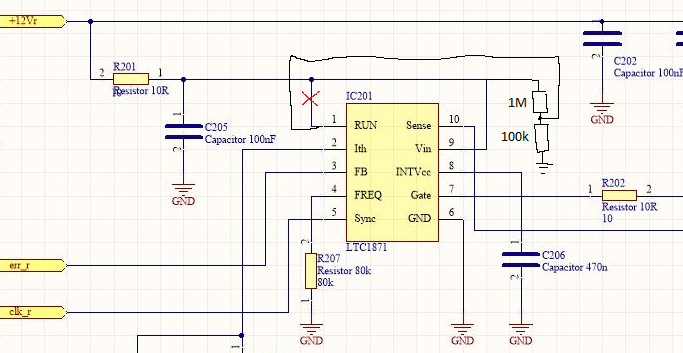The lamp is still working after almost one year. But over the months, i noticed that there were some things which needed a little improvement. Yesterday, i finally decided to do so.
The first thing is: Sometimes, gnats would enter the lamp, without being able to leave. Therefore, i had to clean the lamp regularly, which is not that easy. It was simply not designed for that. The obvious solution is to seal the lamp better, and this is just what i did. I glued some white foam under the acrylic glass and on the inside of the lampshade, and this foam seals the lamp now. There are still some places where gnats can enter, but the risk of that is much lower now.
 Also, i bent and painted the lightshade. The bend should make the light a little more focused, and the paint makes it look a little better.
Also, i bent and painted the lightshade. The bend should make the light a little more focused, and the paint makes it look a little better.
I still need to change something about the corners, since the aluminium foil doesn't really look good. But for now, it does its job. Also, some cable management would be nice.
Also, i decided i should change a little detail about the boost converters.

In one of my previous project logs, i wrote that i placed a 1MOhm resistor in front of the "run" pin of my boost converter ICs. I decided that this was not enough, and placed an additional 100k Resistor on each "run" pin to form a voltage divider with the 1M resistors.
The "run" pin can be used as an under-voltage lockout (UVLO). If the LTC1871 measures 1.25V or less at this pin, it will not run. When taking the voltage divider into account, this happens at an input voltage of 13.8V or less. This is important, because most switching regulators act as a constant-power load - the lower the input voltage, the higher the input current becomes. If, let's say, a 5V source was connected, and the lamp was set to a power of 75W, it would have to draw 15 Amps, and the fuses might blow because of this.
But because of the UVLO, the boost converters simply won't try to start at a voltage which is too low for reliable operation.
This can also improve the startup process of the lamp, since when turning the lamp on, the input voltage will ramp up, instead of being present instantly. If it ramps up too slowly (this depends on your power supply), the lamp could attempt to start at the beginning of the voltage ramp, with the consequences i described above.
In the case of my power supply, this never was a problem, but it's generally better to design electronics to be compatible with different power supplies.
 t.oster92
t.oster92
Discussions
Become a Hackaday.io Member
Create an account to leave a comment. Already have an account? Log In.